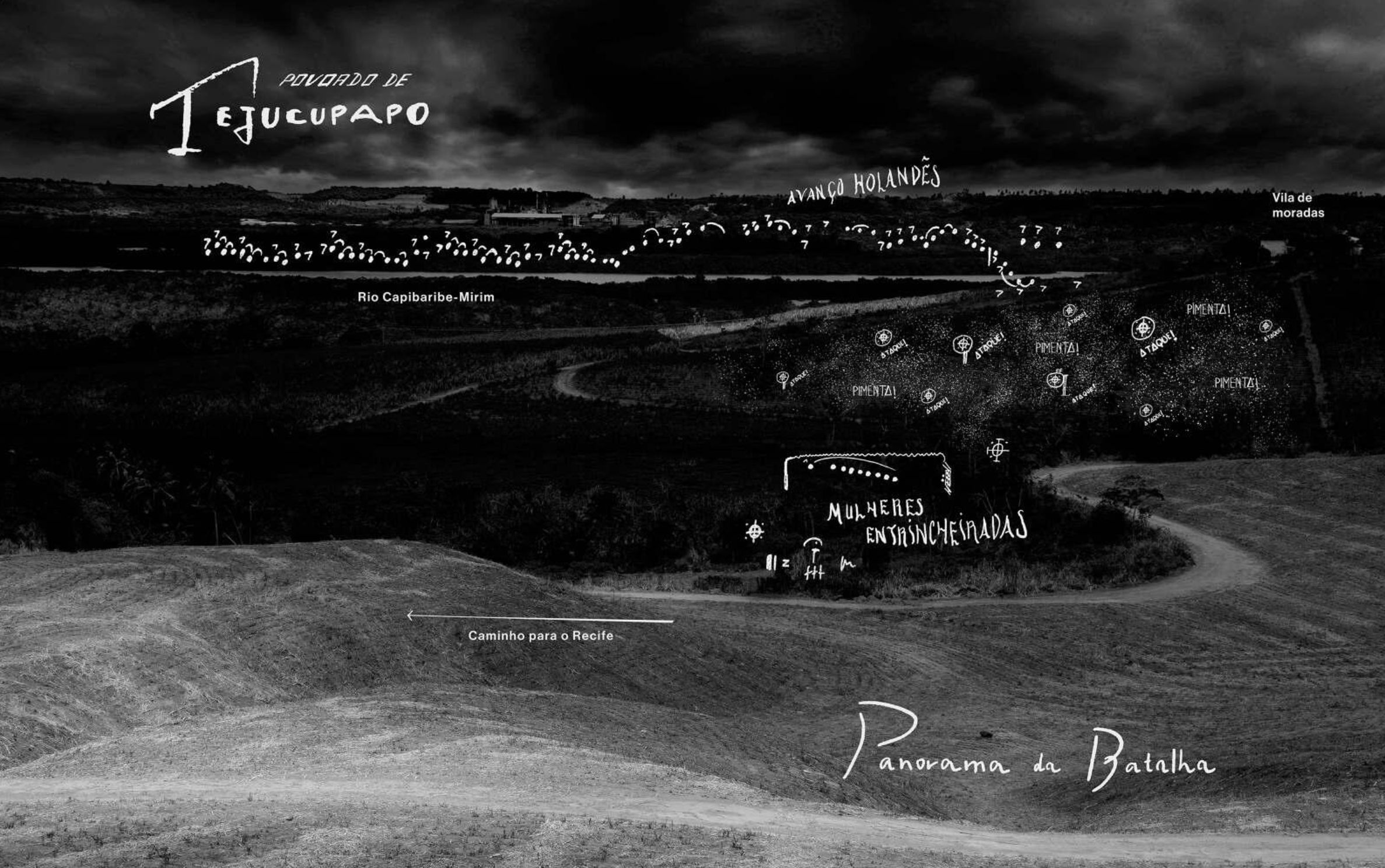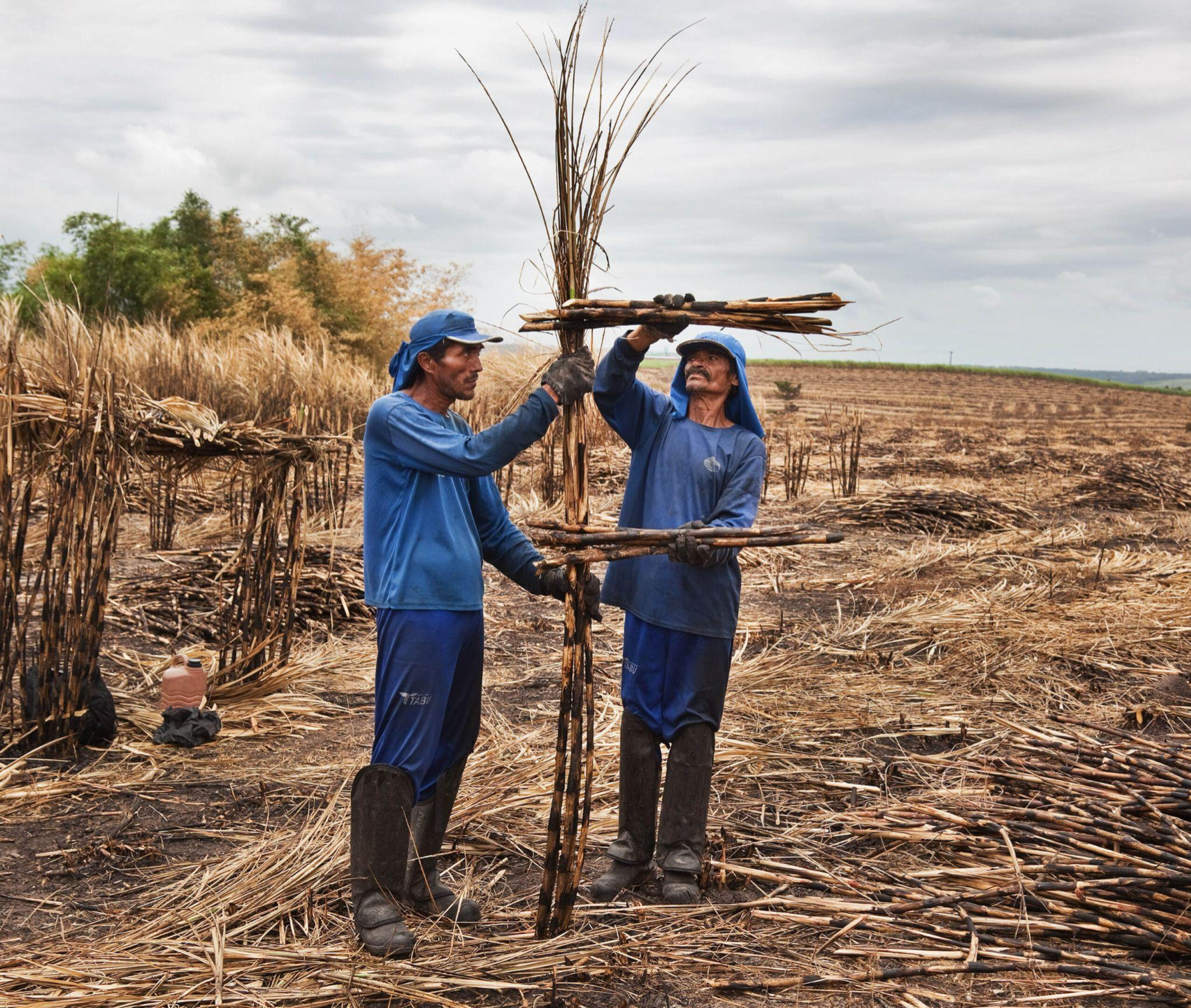Jonathas De Andrade’s Playful Activism
The Brazilian artist’s collaborative oeuvre at Foam Museum Amsterdam created a new playground for contemporary art through interactive photography.
© Jonathas de Andrade. Heroínas de Tejucupapo (Tejucupapo Heroines). 2022. 94 images printed on raw falconboard. 119 cm x 75 cm. Foam Museum, Amsterdam.
Is activism inherently serious, or can it be light-hearted? Jonathas De Andrade answered this very question through Staging Resistance, an exhibition that challenged views of power and inequality through playfully retelling the intricate history of Brazil’s north-eastern region.
Staging Resistance was a game for both its subjects and viewers. As Hinde Haest - the lead curator at Foam - commented, the artist “combines photography with other forms of visual communication, such as sign language, text, drawings, graphic design, fragments of maps, typography and other didactic tools” to offer a new gaze on Brazil’s complex past and present.
A strong background in communication studies is palpable in De Andrade’s use of mixed media as a means of artistic expression. Originally inspired by documentary photography but breaking away from it, De Andrade subtly protested against perennial inequality and power imbalance in Brazil through multiple artistic mediums.
The exhibition was part of the Next Level series at Foam Amsterdam, which invited young artists to embark on projects that re-interpret photography in an innovative and radical way. De Andrade’s Staging Resistance is a prime example, as he provided meaningful art through refreshing playfulness.
A Closer Look
In specific locations of north-eastern Brazil, existing power dynamics and socio-economic exclusion are strongly embedded in the way of life of its inhabitants. De Andrade collaborated with 3 local communities to perform a series of photographed social experiments. In them, they gain a voice through re-telling their stories. These groups include laborers from a sugar refinery in Pernambuco, a group of women in the Tejucupapo village, and members from the Kavapó Menkragnoti community in the Amazon region. Through these different but interconnected narratives, De Adrade ambitiously touches on three pressing issues in Brazilian politics: poverty, illiteracy and resource overexploitation. Photography, as an expressive medium, becomes the catalyzer for the communities’ resistance against these.
As we first entered the exhibition, we were met with a room cut in half by a monumental 9-meter wall made of overlapping monochrome images printed in thick falcon boards. On either side of the fortress, a visual inventory of seemingly random objects was seen. Upon closer inspection, we perceived something else - an interaction between the two renderings. A message scribbled in the dark.
The Heroines of Tejucupapo is a series of 94 photographic re-enactments of the battle of Tejucupapo; an annual theatrical performance staged by the women of the community. They reminisce on the triumph of the village over the Dutch colonizers in the year 1646. The women wear contemporary clothes, fight with everyday household appliances, and the men use military uniforms. Some images are intervened with white scribbles showing arrows, words and marked paths to reveal details from the action. Rather than seek historical accuracy, De Andrade combines performance, graphic design and photography to propose a major metaphor: what was once a battle against the colonizers is now a fight for basic needs. In both instances, the community’s women face the fight with the same vigor.
De Andrade’s innovative vision becomes evident when we understand the images are not showing isolated subjects, but involved actors - De Andrade takes the back-seat, allowing for the women in the photographs to create the story that is told about them. In Haest’s words, De Andrade transforms “the passive act of listening into an active one” through this first series.
© Jonathas de Andrade. Heroínas de Tejucupapo (Tejucupapo Heroines). 2022. 94 images printed on raw falconboard. 119 cm x 75 cm. Foam Museum, Amsterdam.
© Jonathas de Andrade. Heroínas de Tejucupapo (Tejucupapo Heroines). 2022. 94 images printed on raw falconboard. 119 cm x 75 cm. Foam Museum, Amsterdam.
As we moved along the exhibition, we entered another room. ABC Da Cana (Sugarcane ABC) is a single-row display of 26 photographs printed on rag paper. Each of them showed a team of laborers from the TABU sugar refinery playfully spelling the letters of the alphabet in sugarcane. Inscribed on the museum wall was a QR code with an invitation: “play with ABC Da Cana Typewriter! Scan this QR code and learn about this artwork in a new way.” Using our phones, we could interact with each image by typing out the letter we saw in front. The game responded by displaying a custom typography of the letter - a transformed version of the image turned font. As Foam describes, “the performance of the letters of the alphabet can also be seen as a commentary on the level of illiteracy in rural Brazil.” Through encouraging the act of spelling the alphabet using the raw material of sugarcane, De Andrade skillfully commented on the dark history of slavery in colonial Brazil with a playful tone. The artist once again avoided heavy confrontation through proposing an engaging interaction between subject and viewer.
© Jonathas de Andrade. ABC Da Cana (Sugarcane ABC). 2014. 26 photographs printed on rag paper, 30 x 35 cm each. Foam Museum, Amsterdam.
The final section of the exhibit, Hunger of Resistance, was centered around the story of the Kavapó territory, a contested land along the Amazon River. The area has long-been subjected to resource exploitation, which directly affects the livelihoods of the Kavapó native people. For this series, De Andrade invited the women of the community to draw over the historical maps of their territory, which were originally demarcated by the Brazilian army in the 1970s.
Hunger of Resistance is partially displayed as a series of diptychs of photographs and intervened maps. The printed photos are rendered on rag paper and framed with silk screened texts placed directly on the glass. They depict the women’s hands covered in acrylic ink and holding handmade brushes. The drawings symbolically challenge old power and reclaim the land. As Andrade comments, “the images of the hands together bring a collective gesture of resistance.” Again, the artist gave his artistic subjects the power to draw their own message.
© Jonathas de Andrade. Kayapó Menkragnoti Hand. 2020. Acrylic Ink on Canson Paper, and photo printed on cotton rag paper, 85 x 85 cm each. Foam Museum, Amsterdam.
De Andrade’s work exudes an entirely new and original way of using art as a means of political discussion. By creatively introducing elements of play and performance, De Andrade breaks away from the ‘moralistic’ to make some room for the ‘interactive.’ Highly technological and aesthetically dynamic, Jonathas De Andrade leads us into the future of activist photography.
ABOUT THE AUTHOR
Isabella Ibáñez De La Puente is the Co-Founder & Chief Editor at Project Synergy. She graduated from the University of Amsterdam in Communication Science. She now resides in Lima, Peru, where she works as a marketing strategy analyst and a freelance writer.
Find her on LinkedIn






